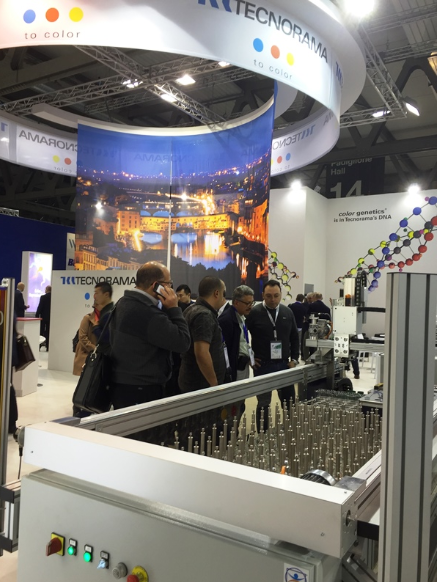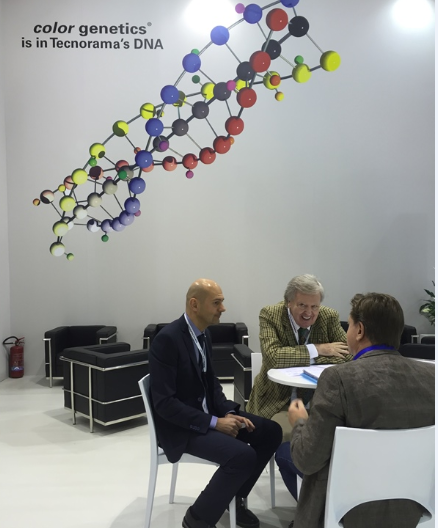Tecnorama is worldwide known for DOS&DYE® system that completely automates dyeing laboratories and small-batch production. At ITMA to maintain the market expectation, Tecnorama is proud to launch two original innovations for the textile dyeing process. The company welcomes its visitors at ITMA in its booth HALL 14, STAND B113 with its innovative machines.

The first is the new SHAKERAMA automatic dyeing machine particularly suitable for the knit fabric made of all kind of fibres (natural, artificial and synthetic). SHAKERAMA is conceived to work with groups of more autoclaves carrying out simultaneously dyeing cycles with different recipes but using the same dyeing program, up to 142°C. The cooling system, working by a forced circulation of cold water, can bring back the temperature down to around 30°C. With the heating system used, perfect temperature uniformity and regularity are guaranteed for all dyeing units.
SHAKERAMA has been devised to form part of the DOS&DYE® system, thus it works completely independently and automatically.
The second device is an instrument for the analysis of the quality of wastewater during the dyeing process called ECODYERAMA.
This simple, economical but extremely practical instrument has been conceived and produced by Tecnorama in order to analyse the quality of wastewater after each operation, entailing the washing of textile materials during the dyeing process.
ECODYERAMA is easy to use and can be applied on all existing dyeing machines. It is suitable for any type of fibre and/or form of textile material (Flock, Yarn, Reels and Skeins, Fabrics, Mesh, etc.) and can monitor any type of dyeing technique (Reactive, Direct, Acid-based, etc.).
The instrument is to all intents and purposes, a very important and economically relevant ecological system. Since it is possible to know, in a totally automatic and scientific way, when the dyeing process is completely finished, a lot of water being wasted when performing unnecessary additional washes can be saved. It is also possible to significantly shorten dyeing process times, thus raising productivity.
